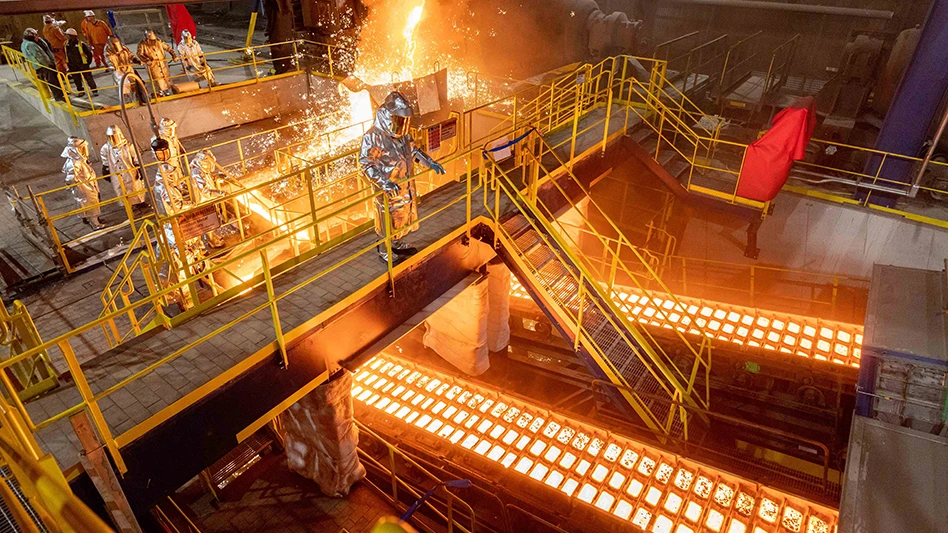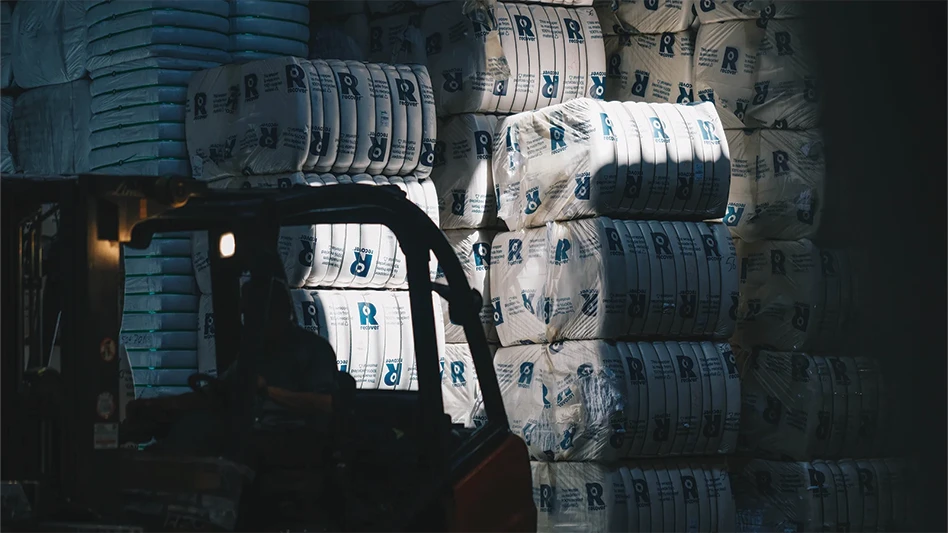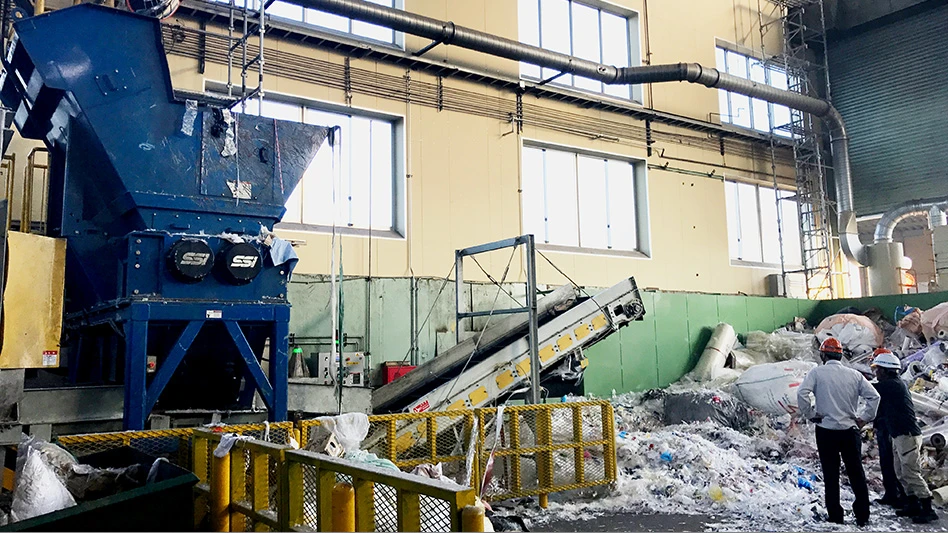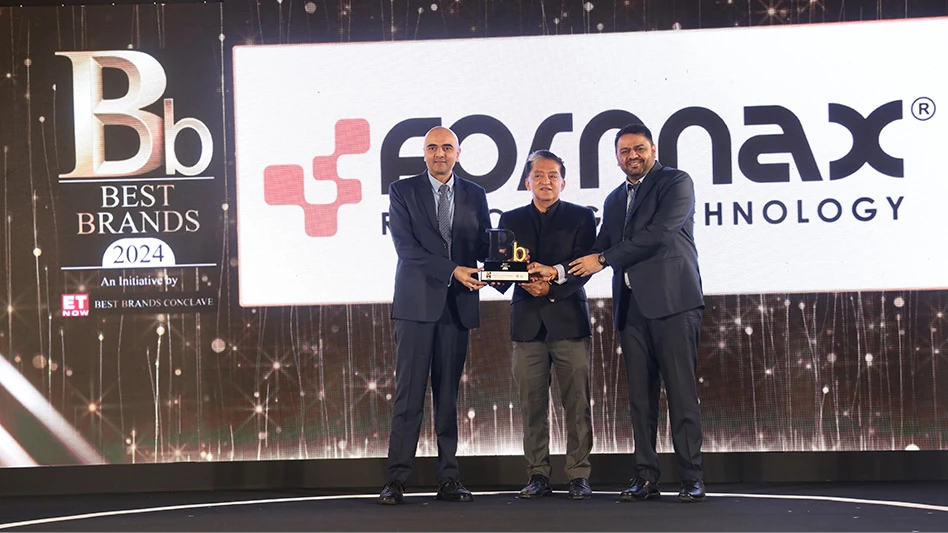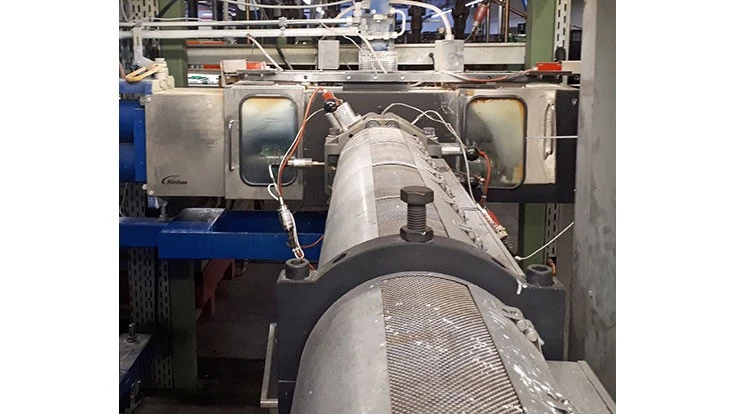
Cyklop, an international supplier of industrial packaging systems for load securement, has increased productivity, reduced downtime and cut waste in the production of strapping tape from polyethylene terephthalate (PET) bottle flake using an advanced melt filtration system from Nordson Corp., headquartered in Westlake, Ohio.
At its facility in Cologne, Germany, Cyklop GmbH (https://www.cyklop.de/) replaced an older hydraulically powered backflush screen changer with the recently introduced BKG HiCon™ V-Type 3G system from Nordson. Cyklop reports that the new screen changer reduces operating costs because it needs 30 percent fewer backflushes and requires screen changes 40 percent less frequently, according to a news release issued by Nordson.
Employed in a production line at throughput rates of 450 to 550 kilograms per hour, the HiCon V-Type 3G system maintains flow and melt pressure at constant levels, ensuring uniform product quality, Bernd Causemann, plant manager, says.
“The BKG HiCon V-Type 3G screen changer requires less maintenance and operator supervision than either the older Nordson system or a backflush system from a competing supplier,” Causemann says. “The higher efficiency of the V-Type 3G screen changer means fewer backflushes and less material waste. The system is particularly good in dealing with contamination surges since the filtration area is regenerated very effectively in a short amount of time.”
In the BKG HiCon V-Type 3G screen changer, melt flow from the extruder is split at the entry side and guided to four screen cavities on two screen-bearing pistons with screens in each cavity, Nordson says. Each pair of cavities is positioned to filter their respective melt streams until the piston removes one of the cavities from the process to remove contaminant buildup by means of backflushing. In normal operation, polymer is flowing through all four cavities. While one of the screens in the cavities is changed or flushed, the other three—or 75 percent—remain in the process so that throughput remains uninterrupted.
The backflushing cycle is automated. In addition to the two screen-bearing pistons, a single hydraulically actuated displacement piston operates during backflushing. When the differential pressure across the screen changer increases to a preset level because of contaminant buildup, the backflush sequence for all cavities will be started automatically, the supplier says. For each cavity, the displacement piston retracts, creating a reservoir of filtered molten polymer. This material is then hydraulically compressed and discharged in reverse direction, back through the screen, carrying away contaminant for removal from the system. The sequence is performed for each cavity one after the other.
“In comparison with the earlier V-Type system, the height of the new HiCon V-Type 3G screen changer has been reduced by 30 percent, permitting a lower extrusion height,” says Christian Schroeder, global product manager for BKG melt delivery products. “A single displacement piston is used for backflushing instead of having one for each screen cavity, and hydraulic piping has been optimized.”
Latest from Recycling Today
- Biden officially blocks Nippon Steel’s acquisition of US Steel
- Highland Sanitation awarded solid waste and recycling contract in Wanamingo, Minnesota
- Ecobat gathers support for California permit renewal
- RecyclX platform designed to provide materials transparency
- Turkish mills sampled wide scrap market in 2024
- GLE Scrap Metal acquires interest in Mallin Cos.
- 2024 marks strong year for Van Dyk
- Recycled metal portrayed as former dictator’s fiefdom

